Dog Poo Wormeries and Composting Cat & Dog Faeces
Approximately 1,000 tonnes of faecal waste are produced every day by dogs in the UK. As a responsible dog owner when you are out with your dog you will collect your dog waste in plastic bag and dispose of it in the nearest bin. However, a normal plastic bag can take many years to degrade.
Compostable dog waste bags can be used to help reduce this problem. Compostable bags will rot in about three months in a hot (40-60C) compost heap. To maintain the temperature the compostable material should be aerated by turning (Hot Composting) Hot composting should kill any pathogenic bacteria. If ordering bags be careful there is a difference between biodegradable, compostable and home compostable
There are a number of suppliers including:
biobags.co.uk, naturalcollection.com, com-bio.co.uk.
adiosplastic.co.uk/shop/compostable-poo-bags/
allbio.co.uk/fully-compostable-dog-poop-bags-large-extra-strong/
ecovibe.co.uk/collections/pet-waste-bags/products/beco-home-compostable-dog-poo-bags
At home there are alternatives to "Bag it and Bin it" and in this section we will consider some of them.
Cat waste and cat litter present additional problems due to the likely presence of a parasite Toxoplasma which in pregnant women can be a risk to the unborn child. For this reason, expectant mothers with cats should be aware of the dangers of toxoplasmosis.
D. Hill and J. P. Dubey in a Wiley Online Library paper on "Toxoplasma gondi transmission, diagnosis and prevention" make the point that the socio-economic impact of toxoplasmosis in human suffering and the cost of care of sick children, especially those with mental retardation and blindness, are enormous.
Do not dismiss these risks just because you have a kept cats for years.
Some scientists advise that pregnant women, should avoid contact with cat where the food source is unknown, contaminated soil or raw meat. To reduce the risk of infection cat owners are advised that pet cats should be fed only dry, canned, or cooked food. The cat litter box should be emptied daily wearing gloves but this should not be undertaken by pregnant women unless there is no alternative.
While with the use of the right method and the correct precautions cat faeces and litter can be hot composted, I would strongly advise against putting cat faeces in a wormery as it has been shown that earthworms can transmit T. gondii infection to birds. At this stage it appears that oocysts present in the alimentary tracts of the worms are responsible for these infections when the worms are eaten by birds so there is a possibility that the parasite may be excreted in the worm casts.
Please do not skip the hazard and precaution sections as there are risks involved with all faeces and suitable control measures are necessary.
Health warning and Risk Reduction
In the past the advice has been that dog & cat poo should not be composted because of the risk of the roundworm Toxocara canis and the risk of Toxoplasma from cat faeces.
While Toxocariasis in humans is relatively uncommon, with an average of 10 cases occurring each year in England, it can be serious. Evidence of human infection by T. canis in London blood donors was found to be present in 2.6% of those sampled (Bignall, 1993).
T. canis was found in 6.3% of soil samples from London parks and gardens (Gillespie et al., 1991) while another survey found soil samples from 66% of London parks (Lloyd S 1998).
Toxocara canis eggs from grass, soil, vegetables, other plants or compost may contaminate the hands and then be ingested. Eggs which are swallowed can hatch into larvae in humans but will not develop into adult worms. The larvae will travel around the body – usually causing no problems but can settle in the retina where they may cause damage or blindness. Toxocariasis usually affects children who are between one and four years old. However, cases have been reported in people of all ages. Younger children are particularly at risk because their play habits make them more likely to encounter contaminated soil. Many young children also have a habit of eating soil.
The symptoms of toxocariasis can vary depending on where in the body the infection occurs. There are three main types:
1. Covert toxocariasis. This is the most common and mildest form of toxocariasis. Symptoms include abdominal pain, a cough and headache.
2. Visceral larva migrans. Visceral larva migrans develops when large numbers of parasites spread through different organs of the body, such as the lungs, liver and heart. The symptoms include fever, abdominal pain and shortness of breath.
3. Ocular larva migrans. This is the least common but potentially most serious type of toxocariasis. The condition can develop if the larvae move into the eyes. The main symptoms are disturbed vision and irritation of the eyes. Left untreated, ocular larva migrans can result in permanent vision loss, although only one eye is usually affected. About 50 cases of toxocara involving eye damage are reported annually. www.threerivers.gov.uk
Toxocara are survivors and can cross the placental barrier so that an infected bitch will have infected her puppies before they are born. The parasite can remain dormant in the tissue of the bitch until she become pregnant. However recent surveys of pet dogs, which we assume are regularly wormed, have shown that only 1% of animals are passing eggs in the faeces. Higher figures have been obtained where samples have been taken from parks in towns, but these samples are likely to include a number of stray and untreated animals (including foxes).
The eggs can survive the cold or cool composting and contaminate the soil and plants on which the compost is used. It can then be transferred to the hands and be ingested by children, or by children and adults eating contaminated food.
Cat faeces may contain toxoplasmosis. In the UK 23-33% of the population are infected with toxoplasma but in most cases a person will not realise they have caught the infection. Infection with this parasite is usually asymptomatic and does not produce any symptoms. It can cause symptoms like flu or glandular fever, sometimes including swollen lymph nodes. Once a person has had the disease they are generally thought to be protected for life, unless they have an impaired immune system. Infection is a particular risk to pregnant women as it can cause foetal blindness, brain damage of unborn children. about 2,000 pregnant women contract toxoplasmosis in the UK each year but most never know they have been infected as they do not experience any symptoms.
The adult parasite is carried by cats, but the eggs shed in the manure can infect humans, pigs, cows and other mammals. The parasite can be present in meat, unpasteurised goats’ milk, cat faeces and contaminated soil or unwashed food plants carrying soil. The toxoplasma parasite can infect most birds and warm-blooded animals, including humans. Cats become infested as a result of eating birds, mice or other raw meat. They will then pass organisms in their faeces for about 14 days.
- Toxoplasmosis cannot be caught by stroking a cat or by simply having a cat as a pet. The infection results from contact with the infected cat faeces or ingesting anything infected with, or contaminated by, the parasite such as poorly or unwashed vegetables or fruit
Non-composting sources could include
- raw or undercooked meat and raw cured meat such as Parma ham or salami
- unpasteurised goats’ milk and dairy products made from it
- and exposure during lambing
This sounds bad but to bring the risk into perspective. It is estimated that between a third and half of the UK population will have the infection at some point in their lives, probably without knowing it, after which they will be immune and will not become infected again. In the 60s when I was in a laboratory which was working on T.gondi only two out of the eight or nine workers did not have antibodies.
Under normal conditions the sporulated oocysts can survive a year or more in the soil or sand (cats like to deposit samples in sand pits).
However hot composting at 60°C will reduce most pathogens to safe levels within an hour and will kill T. gondi which means that the faeces from cats who use a litter tray can be composted provided the compostable cat litter is used together with Hot composting where 60C is maintained for a sufficient period to kill the parasite.
If you keep dogs or cats which poo in the garden the risk of contamination already exists. In practise cat waste is more difficult than dogs faeces to deal with as it is likely to be buried in the soil rather than left sitting on the lawn or surface of the soil and there is a risk of coming into contact with it while handling soil unless wearing gloves.
The composting/gardening risks can be controlled by taking simple precautions
- Physically remove all traces of soil and the parasites from fruit and vegetables by thoroughly washing before eating or cooking. However, water can be a source of infection in tropical and subtropical countries where unpurified surface water is drunk and has also been found to be a risk factor in parts of Europe. There was an outbreak of toxoplasmosis in Canada involving contamination of municipal drinking water. Untreated water that may contain Toxoplasma oocysts and contaminate fruit or vegetables. Oocysts have been found on leafy greens so It would seem that in addition to unwashed fruit and vegetables washing with contaminated water could increase risk of infection
- Wear gloves when gardening
- Wash hands and gloves afterwards
- If taking a coffee break and eating while gardening wash your hands first.
- If pregnant or planning to become pregnant avoid gardening in areas soiled with cat faeces and cover children’s sandpits.
Simple additional control measures can be used to ensure that composting dog faeces in a wormery does not add to the risk.
- Pregnant and nursing bitches are sources of infection they should be treated before and after whelping. Waste from these animals should not be composted
- All puppies and kittens should be assumed to be infected with worms, and they should be treated routinely in accordance with veterinary advice.
- Treat adult dogs 3 -6 monthly to reduce the re-infection rate
- After worming wait 1 week before adding poo to your wormery.
- Do wear gloves and wash hands.
Do not use worm compost made from dog poo:
- On vegetables or soft fruit
- As mulch on flower beds to which dogs have access or where children play.
Do not put cat faeces in a wormery
- Pregnant women should avoid contact with cat faeces.
- Garden vegetables should be washed thoroughly before eating because they may have been contaminated with cat faeces
If a little dog or cat poo has been added to a cold composting system by mistake the compost should be allowed to mature and then applied to an area of flower garden away from children. Any pathogens should be have been diluted by the rest of composted material and the turning during aeration. The pathogen count will certainly be lower than that present in an area of soil contaiminated directly by cats.
Toxocara in dogs
Toxoplasma in cats
We have include more information on Toxoplasma in this section. Toxoplasmosis caused by the microscopic parasite Toxoplasma gondii is widespread and can infect a wide range of warm-blooded animal but cats are the main (definitive) host and are necessary to complete its the life-cycle. A source of information in addition to the specific references given can be found at http://www.icatcare.org/advice/cat-health/toxoplasmosis-and-cats
In the United States and the United Kingdom, it is estimated that 16–40% of the population are infected. In Central and South America and continental Europe, estimates of infection range from 50 to 80%. (Dubey JP, Beattie CP. Toxoplasmosis of Animals and Man, Boca Raton, FL:CRC Press, 1988. Slightly different figures from another source are given above.
Human infection can result from ingestion of ova from cat faeces but can also be aquired from eating undercooked meat from another animals, e.g. beef, lamb or pork, and diet may account for the variation in human incidence.
Once an food animal has been infected with T gondii, it will probably remain infected for life, as the parasite can be present in microscopic cysts present in tissues (typically in the muscle) where it will remain dormant, but 'hidden' from the immune response.
While in humans toxoplasmosis is usually without symptoms or producing mild 'flu'-like symptoms. It can be more severe in 'high risk' groups of individuals whose immunity is impaired. This group includes:
- Pregnant women because of risks to the unborn child,
- Babies and young children,
- the elderly and
- Immunosuppressed people e.g , those receiving anticancer therapy.
In this group of ‘high risk' people, infection can be associated with severe illness including encephalitis (inflammation of the brain), abortion, stillbirth, birth defects (including mental retardation) and other problems affecting the nervous system and eyes.
In cats, infection with T gondii is much more common in outdoor cats that are active hunters, and in cats that are fed undercooked or raw meat. In general, depending on their lifestyle, between 20% and 60% of cats will be infected with T gondii, but very few of these will ever show clinical signs.
The main means by which humans aquire infection by ingestion of an oocysts passed in a cat's faeces but in most studies, contact with cats in the home was not identified as a risk of direct infection. While cats may excrete millions of oocysts generally, only about 1% of cats in a population are found to be shedding oocysts at any given time. ( Dubey JP, Beattie CP Toxoplasmosis of Animals and Man. Boca Raton, FL:CRC Press, 1988) . It has been found thatexposure to three or more kittens increased the risk this suggests that exposure to a litter of kittens may be responsible for the risk and I remember that kittens were more likley to be excreting high numbers of oocycst than adult cats.
Dubey and Beattie report that sporulated oocysts survive for long periods under most ordinary environmental conditions surviving for months and even years in moist soil. Oocysts in soil can be spread within the garden and even onto food vegetables by invertebrates such as flies, cockroaches, dung beetles and earthworms so root crops and those where the leaves are eaten, espicially if they touch the ground, can present a potential risk.
Salmonella in Dogs
Surveys have shown that between 0% -43% of dogs may carry Salmonella with the pet dogs having a lower incidence than stray, kennel dogs, greyhounds, farm dogs and those fed raw meat. These figures are based on papers available on Google Scholar other workers have published results in paid for Journals available in University and similar Libraries
- Hackett, and Lappin, record that Salmonella spp. were detected in 2.3%, of faecal samples were obtained from client-owned dogs presented to the Veterinary Teaching Hospital at Colorado State University. Toxocara canis was found in 3.1% (Tim Hackett, DVM, MS and Michael R. Lappin, DVM, PhD, Diplomate ACVIM Journal of the American Animal Hospital Association)
- A survey involving five consecutive daily faecal samples from 138 dogs in 84 households in Ontario between October 2005 and May 2006 showed a higher than expected number of the dogs (23.2%) had at least one faecal sample positive for Salmonella, and 25% (21/84) of the households had at least one dog excreting Salmonella. However the incidence of Salmonella was linked to the feeding of raw food and highlight the potential public health risk of including raw animal products in canine diets (Ref: . Leonard, E. K., Pearl, D. L., Finley, R. L., Janecko, N., Peregrine, A. S., Reid-Smith, R. J. and Weese, J. S. (2011), Evaluation of Pet-Related Management Factors and the Risk of Salmonella spp. Carriage in Pet Dogs from Volunteer Households in Ontario (2005–2006). Zoonoses and Public Health, 58: 140–149. doi: 10.1111/j.1863-2378.2009.01320.x)
Dog faeces at home
At home the dog waste may be:
- Put in a household bin where it may stay for a fortnight before collection before being taken to landfill,
- Put down the loo
- Buried in the garden or put in a Dog Waste Decomposer, buried in the ground, which may become blocked due to the quantity of waste or as a result of drying out.
- If only occasional small amounts put in a Green Cone food digester
- Hot composted - but this needs considerable skill to maintain the correct temperature if a traditional hot composting system is used. However it is much easier using a modern insulated and enclosed system such as the Hotbin.
- Converted to compost in a dog poo wormery (the compost may be used on a flower garden or disposed of via the council landfill bin
If you dispose of the waste produced at home by flushing it down the toilet you can buy flushable poo bags (flushablepoobags.co.uk), which break down quickly and harmlessly in the water, and the waste goes to the sewage plant to be safely treated. Obviously as a composter I would hope that the faeces will be composted.
Dog poo Wormery
A dog poo wormery used solely to deal dog faeces offers an effective alternative means of dealing with dog poo without mess, fuss or smell. Wormeries now available to process poo from a single dog to wheelie bin size capable of dealing with poo produced by up to 15 small dogs. Although any wormery can be used to compost dog poo it is advisable to keep the pet poo wormery just for dog’s faeces and not to compost normal kitchen food waste at the same time
Single chamber (the smaller versions of these require the faeces to be deposited on alternative sides of the chamber so that the worms can digest the material before harvesting. When using a system such as this you are faced with a pile of poo everytime you open the wormeriy to add more faeces) or stacking wormeries are available. The stacking wormeries normally consist of two or more trays with a lid, drainage sump and stand. The working trays have perforated bases to allow any liquid waste to drain through to the drainage sump and the worms to move to the upper tray as poo is added. Using a stacking system the lower trays are used first once the bottom tray is filled with faeces and paper fresh faeces are then added to the upper trays while the composting process is completed in the lower tray.
The compost (worm castings) can be harvested as the worms move to the upper layers. The bottom sump collects the valuable liquid waste which can be diluted 1:10 and used as a fertiliser on the flower garden.
There are a number of suppliers of stacking wormeries. Details of Original Organics and Wormcity are given below.
The Tiger Pet Poo Wormery
Tiger Wormery Pet Poo Loo Stacking wormery with draining slump, two composting trays and stand is suitable for 2 average size digs or one large dog. Details from:
http://www.originalorganics.co.uk/pet-dog-poo-loo-wormery.htm
Worm city stacking wormery http://www.wormcity.co.uk/shop/Pet%20Poo%20Loo
The Pet Poo Loo works in exactly the same was as other stacking wormeries but the company does provide further information on suitabilty for different numbers of dogs.
As A General Guide
- 2 Composting Trays (50 Litre) -> Cat or small
- 3 Composting Trays (75 Litre) -> Medium sized dog (or 2 small dogs)
- 4 Composting Trays (100 Litre) -> Large Dog (or 2 medium dogs)
- 5 Composting Trays (125 Litre) -> Xtra Large Dog
Larger wheelie bin type wormeries are available from http://www.dogpoowormery.co.uk/ in sizes up to 1,000l that will deal with faeces from up to 8 large or 15 small dogs
|
| 120L | 240L | 1000L |
| Small dogs | 3 | 4 | 15 |
| Medium dogs | 2 | 3 | 12 |
| Large dogs | 1 | 2 | 8 |
-
Chloe and the model dog on wormery
Chloe meets the new dog who was not bright enough to open the wormery before using it
-
Wonder plastic dog poo
The wormery as it will be taken to shows. The dog poo is "sticky" plastic which feels awful bound to be popular with the kids.
Compost and worms are from a normal wormery -
The finished dog poo compost
Compost from a real dog poo wormery. It is a bit lumpy as this is how it was allowed to dry so that I csan take it to talks
Pathogen reduction during Vermiculture
If you are considering using worms to compost manure, including dog faeces, which will contain E.coli and other bacterial pathogens such as Salmonella you may be interested in some evidence that composting worms and vermicomposting can reduce the numbers of pathogens present in the faeces.
Most of the information that I could find related to the use of worms to treat sewage biosolids (I include some information at the end of this page). There is some evidence to indicate that worms can reduce pathogens in manures as well (although this doesn't appear to have been studied as extensively). Murry and Hinckley (1992) undertook research on Salmonella in horse manure when processed by Eisenia fetida, This showed 8% reduction in numbers of salmonella when worms were present compared with a 2% reduction in treatments without worms.
One of the concerns of using Vermicomposting is that, unlike hot composting, it must take place at temperatures below 35°C in order to avoid killing the worms and therefore does not reach temperatures required for kill pathogens. While this is true it is necessary to keep a sense of proportion. Any pathogens that are present in the compost after the faeces has been processed will have been present in the faeces excreted by the dogs at more concentrated levels than in the compost. If there are salmonella or toxocara present then you have been (and still are) living with them in the garden
While it is difficult to find details of readily available peer reviewed published work on the effect of vermiculture on pathogens in faeces there are a number of documents produced by Councils and there has been a number of papers relating to pathogens in sewage sludge.
Washington State University Compost Educators guide published details of results of an informal report by The City of Eugene, of a dog faeces composting system used by a local composter (in 2004,). This used a plastic bin filled with leaves and composting worms to which dog poo was regularly added. On each occasion the poo was added the contents of the bin were mixed using a compost aeration tool. When the bin became full, after between six months and a year, the contents were transferred to a large plastic plant pot and allowed to mature for another year.
The Eugene Solid Waste and Recycling programme staff had the resultant compost tested for the presence of the. Faecal coliforms, Salmonella spp. and Helminth ova (species not recorded) The tests were then repeated after allowing the material to mature for a further 6 months.
The results were as follows:
| Organism | 12 month sample | 18 month sample |
|
|
|
|
| Faecal Coliforms | 330,000 MPN/gram | 620 MPN/gram |
| Salmonella | 2.4 MPN/gram | less than 0.84 MPN/gram |
| Helminth ova | 8 ova | 2 ova |
No results were given for the samples before composting so the actual reduction in organisms was not recorded.
I have read that the average dog excretes 340 grams of faecal waste a day with each gram containing 23 million faecal coliform bacteria—almost twice as much as human waste. The incidence of Salmonella in cared for pet dogs is low (see below) and regular “worming” of dogs should mean that their faeces are kept free from helminths unless pregnant of young puppies
Bokashi fermentation of dog and cat faeces
Dog and cat waste can also be fermented using a Bokashi system. The use of a Bokashi will degrade the pet waste so that can be used to provide nutrients to the flower garden. It is reported that the use of the fermentation system virtually eliminates the pathogens in the faeces but we would recommend that the safety measures listed above are followed and the “pickled” waste is used on the flower, not vegetable, garden. As Bokashi is anaerobic system equipment, unlike a wormery has an airtight seal which should prevent any smell escaping.
All pet waste can be treated using the Bokashi system and both cat and dog poo can be treated in the same container. The contaminated (clumped) litter from the cat litter tray can also be included. However, the suppliers recommend the use of clay litter because it is easily incorporated in the soil at the end of the fermenting process and some chemically treated paper, wheat, or organic litter may produce unpleasant transient odours.
Most Bokashi bins can be used, the Bokashi Pet Cycle equipment uses the standard t two bins (fermenters) which will cope with up to about 9KG of waste a week. An additional fermenter will be required if the total weekly waste produced ranges from 9-18kg, two supplementary fermenters for 18-27kg and three extra fermenters for 27-36kg of poo.
As with the conventional food waste Bokashi the first bin is emptied when the second fermenter is almost full. The waste is buried in a trench approximately 1 foot wide by 3 feet and 1 foot deep in the flower garden.
The fermented waste should been mixed with the soil in the bottom of the trench and covered with at least 6 inches of soil. The area should not be dug of cultivated for least two weeks.
As with the use of a Bokashi for food processing a white mold may grow in the fermenting waste and the finished product should smell of pickles or cider vinegar if all is working well. While the presence of a rancid odour or black or blue-green fungal growth indicating waste has putrefied.
In additional to the domestic system described above (http://www.bokashicycle.com/ ) there is also Bokashi Pet Cycle Industrial Fermenting Systems for Kennels and day Care establishments. The basic Industrial Fermenting System can process up to 136kg of waste per week using two 55-gallon fermenters.
Unfortunately,
Bokashicycle do not have a distributor in the UK even though they have
had many requests to ship products to the UK. Shipping product to
individual customers adds about $50 to the cost for
individual systems. It would seem that there is an opportunity for a UK supplier to fill this gap in the market
Composting Dog Poo
Hot Composting Dog Poo
An interesting guidance document "Composting Dog Waste" by the Natural Resources Service produced in 2005 but based on a project which began in 1991 provides a technique for dog poo composting This is available as a PDF document on their website http://www.nrcs.usda.gov/Internet/FSE_DOCUMENTS/nrcs142p2_035763.pdf
Advice based on it is published by University of Florida’s Online Composting Centre (http://sarasota.ifas.ufl.edu/compost-info/tutorial/dog-waste.shtml)
In common with other hot systems of composting, whether for garden or kitchen waste, having the correct mix of greens and browns is important. In the Florida information sheet sawdust is recommended as the bulking agent/source of carbon but in the original NRCS document, while sawdust is the first choice as carbon source, other carbon rich materials e.g chopped straw or hay, shredded newspaper or fallen leaves are also mentioned. However it is easier to get a constant volume with something such as sawdust that can be easily measured so as to get a consistant mix.
The normal method for hot composting can be adopted where the materials are collected and added to the compost bin together and then mixed well. While the faeces may harden a little while waiting to be added to the bin composting will not start until the dog faeces and carbon source are mixed and water is added. The water should be added a little at a time until the compost mixture is as moist as a wrung out sponge. (Judge it by eye –you should not squeeze it!. This method will result in higher temperatures and faster composting over the varitation that follows.
I would recommended the use of commercially available compost caddies as a means of storing the faeces prior to add to the bin. These will have a known capacity making it easy to measure the faeces and carbon source in correct ratio and will contain any odour during storage.
The recommended ratio of dog poo to bulking agent is: 2 parts faeces : 1 part sawdust.
Where only one or two dogs are kept it will be easier to use a vartiation of the method add dry saw dust to the dog waste as it is collected from the garden and imediately add it to the bin without stirring. As long as the pile remains dry, very little decomposition should happen. When there is a reasonable amount has been added to the bin moisten it and then turn the mixture to start thecomposting process .
The temperature of the compost should be monitored) and turned weekly or when the temperature starts to fall. Compost can be produced in 4-8 weeks . I would then suggest that it be removed to a maturation bin for a further 12 months before use on the flower garden.
Composting dog poo using a Hotbin
The key to safe composting of dog poo and other manure is that the system reaches an adequate temperature to kill any pathogens present. Although this page deals with the composting of dog poo it is worth bearing in mind that the Hotbin can be used for other manures and not just manure from herbivores.
The Hotbin composter is designed to achieve temperatures of 40-60C and if is to be used to compost dog (or cat) poo it should be working at these temperatures. The Hotbin has a thermometer in the lid (and a fliter to deal with smells - which mine never produces anyway!) and an additional thermometer can be plunged into the composting materials making it easy to check and record temperatures.
The key to reaching and maintaining the temperature is to follow the instructions and feed the bin regularly. I have found that adding a 5 litre caddy of kitchen waste every three of four days with 2 handfuls of bulking agent per caddy ensures that the bin operates at the desired temperature. This approximates to the recommended mix of
1 part bulking agent ( composted wood chip) : 10 parts food waste.
Hotbin recommend the addition of plenty shredded paper, mixed with the bulking agent when the faeces is added to ensure the waste is not "too wet" for hot composting. The optimum amount of paper will depend on condition of the faeces and can be easily adjusted during the composting process.
The compost is produced should be ready in 30-90 days, depending on the type mix of materials used. The Compost can be kept in a separate maturation bin for the 12 months some recommend if required or until needed.
Composting dog poo using a buried plastic bin
This section is based on a method written by Colleen Vanderlinden and published at http://organicgardening.about.com/od/howtocompost/a/Can-I-Compost-Cat-Or-Dog-Waste.htm as an alternative to hot composting. I have not tried this technique but my assumption is that it will not reach a high enough temperature to kill pathogens making it very important to ensure that your dogs are adult, wormed regularly and not pregnant. Any compost produced should be used on the flower garden unaccessable to dogs or children or well buried. If you decide that the the risk of using compost made by this method on the garden is still not acceptable you might still decide to compost the dog faeces in this way on the basis that it is better to send the compost to landfill prehaps once a year rather than bags of dog faeces every week.
Composting of faeces can smell. This might be an issue so please think about the neighbours if trying this technique. Burying the compost bin is said to help contain the smell from the decomposing faeces so the nuisance smell might be less than that produced by conventional hot composting.
A plastic dustbin is used as the composting container a good fitting lid will help reduce any smell. The author recommends cutingt the bottom off the bin. The will mean that if the compost is to be harvested rather that left buried it will need to be dug out of the bin/ground. An alternative method, which would allow the bin and compost to be removed from the ground once the composting process has been completed could entail leaving the bin intact but providing for draining by drilling holes in the base. In either case it is necessary to drill rows of holes round the sides of the bin to allow worms etc to gain entry. Do not make any holes in the lid.
A hole is dug large and deep enough to contain the whole bin including the lid if possible. If necessary, the lid can protrude above the ground but the smell may be better contained if the whole container is underground. In addition to containing the smell, burying the bin increases the area over which the worms can gain access to the waste.
Provide a carbon source by placing a layer of shredded newspaper, straw or autumn leaves into the bottom, then start adding pet waste. Every time more faeces are added, layer in more bit of straw.
The contents of the can should stay moist, which will encourage decomposition. Decomposition can be encouraged by mixing the contents every week or two but I imaging that this will increase the smell. It is recommended that the compost be left for at least two years after it has broken down.
Composting dog faeces with sawdust as a bulking agent
This method was published by Juniper Russo, Yahoo Contributor Network Dec 31, 2008 at http://voices.yahoo.com/how-compost-dog-feces-2405584.html?cat=32 I have shortened and modified it slightly so do check out the original.
As with the buried dustbin techniques this method is not likely to reach the temperatures necessary to kill pathogens so all of the precautions related to worm control in the dog and separation of the finished compost should be followed. Both of these methods could be used prior to sending the finished compost to landfill as an alterative to throwing bagged dog faeces into the wheelie bin for collection by the Council.
Use a dedicated compost bin. I would suggest that it should preferably have a base to prevent access of rodents and to contain the material being composted compost bin.
Layer about an inch of in the bottom of the compost bin and add the faeces as it is collected. After each addition of faeces cover the waste with half-inch or inch-thick layer of sawdust This acts as a carbon source and bulking agent while neutralising the smell the odor
If the bin starts to smell and can be detected from more than three feet away it is recommended that small amounts of soil, more sawdust are added. The addition of worms is also suggested.
Aerating the bin is not undertaken until the composting material almost reaches the top (I would suggest about twelve inches from the top to allow space to aerate the compost . A final thicker layer of sawdust is added and aerating is started. A fork could be used but a modern compost aerator seems a better idea if a plastic bin is being used. It is suggested that the i bin aerated at least once per week a year. The compost may be harvested between r ten to eighteen months have passed after the last sample of faeces was added. The contents should smell like fresh, loamy soil, without any ammonia-like or faecal odour.
The theory is that that any parasites or their eggs that were in the faeces will not be viable by this time. However it the article does mention that “If you are not yet comfortable using your new compost, there is nothing wrong with waiting for a few more weeks, months, or even years, and some dog-owners will choose to never use their compost at all. Even without its use in gardening soil, the process of composting dog faeces is still a beneficial and worthwhile project”.
I would still advise that the compost is only used on flower gardens to which young children do not have access.
Vermiculture reduces pathogens in sewage sludge
Eastman et al. (2001) conducted a field experiment testing the feasibility of vermicomposting as a method for eliminating human pathogens in domestic wastewater residuals (biosolids) to obtain United States Environmental Protection Agency (USEPA) Class A stabilization. The experiement looked at the effectiveness of worm composting on bacterial, viral and helminth ova in sewage sludge from a waste treatment plant. Two biosolids windrows were inoculated with four different pathogens – fecal coliforms, Salmonella, enteric viruses and helminth ova.
Eisenia fetida worms were then added to one of the rows at a ratio 1:1.5 (worm weight:biosolids weight) and left to process the materials. After 144 hours the test windrow containing the worms was found to contain significantly fewer pathogens than the control row.
|
Organism | Reduction in Test Row (added worms) | Reduction in Control (No added worms) |
| Faecal coliforms. |
6.4-log | 1.6-log |
| Salmonella spp |
8.6-log
| 4.9-log |
| Enteric viruses | 4.6-log
| 1.8 -log |
| Helminth ova | 1.9-log | 0.6-log |
The results held out the possibility that vermicomposting could be used to achieve EPA Class A standards for biosolids. Subsequently Craig and Ankers have reported on a Pennsylvania wastewater plant using large-scale vermicomposting system achieving Class A biosolids.
A paper by Lotzof, Mike; Eisenacher, Karsten; Naylor, Lewis “Vermicomposting Acheives Pathogen Stabilisation of Biosolids at Mesophilic Temperatures” (in Proceedings of the Water Environment Federation, Residuals and Biosolids Management 2002, pp. 227-237(11) reported on how vermicomposting has been shown to effectively destroy pathogens in biosolids at mesophilic temperatures. The paper described work at a vermiculture facility to process biosolids in Queensland, Australia at which dewatered biosolids were blended with shredded green waste and applied to open air, elevated vermiculture beds . Material was harvested after 60 days before it is harvested. Vermicast sampled and tested after treatment contained : Fecal coliform,< 1000 cfu/g , E. coli < 100 cfu/g, Salmonella spp. None detectable, Enteric viruses < 1 pfu/g, Helminth ova < 1 ova/g.
Anaerobic Digestion of dog poo
Composters have been able to deal with dog poo at home using a dog poo wormery but when taking the dog for a walk it has normally been a case of “bag it and bin it”. The waste then being sent to landfill or treated as clinical waste.
There may soon be an alternative using anaerobic digestion. as a pilot project by Brian Harper in the Malvern Hills Area of Outstanding Natural Beauty is showing how dog poo can be used to power street lighting in the area where it is bagged. The bags of dog poo are deposited in a small anaerobic digester attached to the lamp post, a handle is turned to stir and heat the material. Microorganisms break down the stool to produce methane. A containment box collects and stores the methane until dusk, whereupon a timer releases the gas to light up the lamp. to assist bacterial decomposition. It is estimated that the methane produced from ten bags of faeces can light the lamp for about two hours.
A similar system called the “Park Spark" has been installed in a park in Cambridge, Massachusetts since 2010, In this larger device by Matthew Mazzotta, a conceptual artist, the methane powers an “eternal flame” lamp post it is hoped that in time sufficient people will provide dog poo in biodegradable bags to provide power for other uses.
Sources:
- https://www.theguardian.com/environment/2018/jan/01/stools-to-fuels-street-lamp-runs-on-dog-poo-bio-energy-waste-
- https://www.naturalnews.com/2018-01-04-cool-multi-use-invention-street-lamp-powered-by-dog-poop-has-proven-to-be-a-successful-green-energy-and-waste-management-combo-in-the-u-k.html
- http://cordis.europa.eu/news/rcn/128734_en.html
- https://phys.org/news/2010-09-dog-lit-poop.html#nRlv
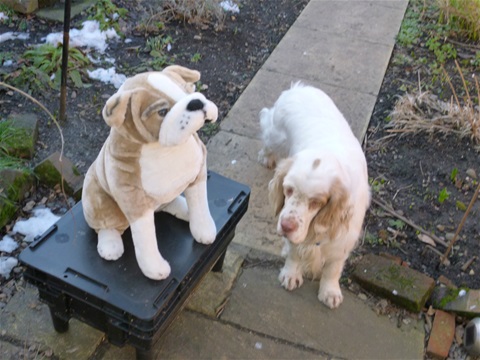
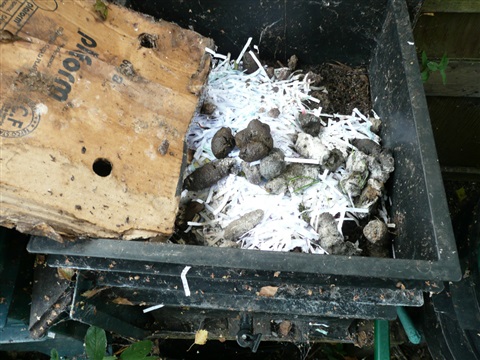
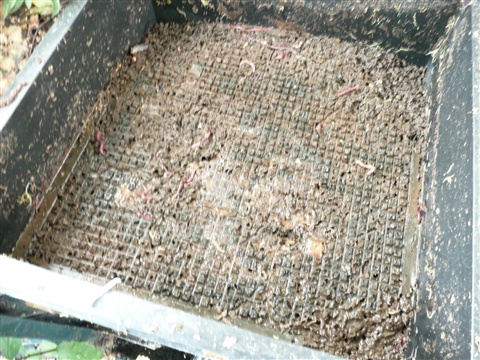
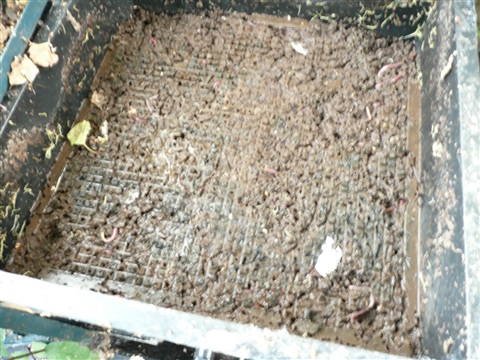
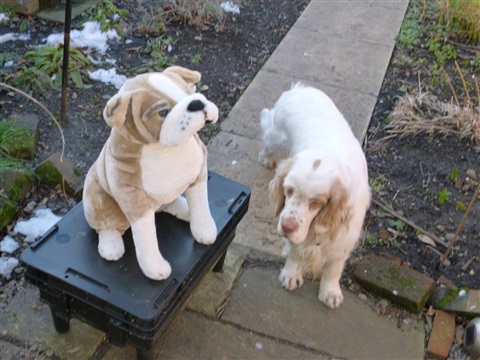
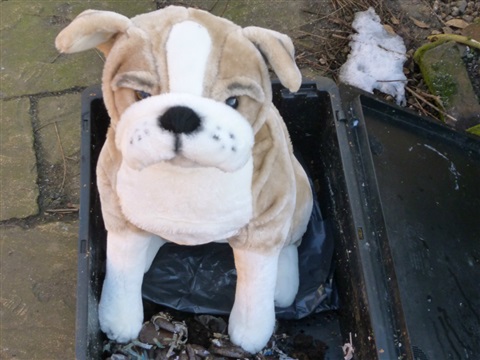
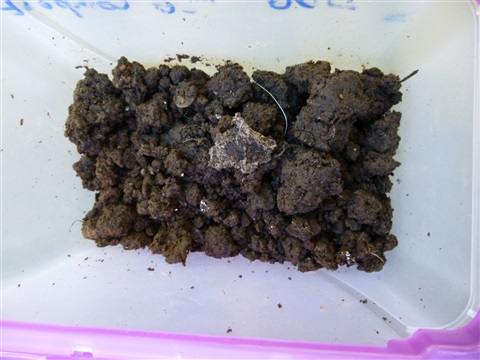
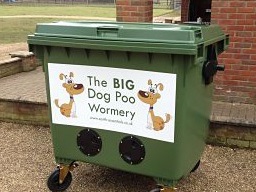
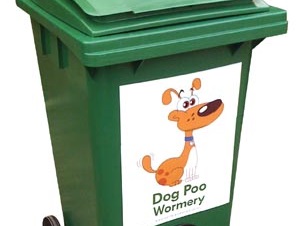
julia
hi where can i buy one please
Noel
I’m developing a dog poo composting product. PIease contact me if interested in consulting. Thnx
Norl Anenberg
Ruth Johnson
Hi are there any suitable compostable dog poo bags that could be put into the dog poo wormery?
Rodney Weston
Hi
There are a number of suppliers listed at the top of the "dog poo" page
Rod
Do check out:
www.thekennelclub.org.uk/health/for-owners/common-canine-poisons/poisons-in-your-kitchen/
www.akc.org/expert-advice/nutrition/can-dogs-eat-garlic/
Susanne Lowe
I bokashi my kitchen waste and have a tiny dog can poop and kitchen waste be combined and the then fed to my wormery? I’ve read worms can’t have a mixed diet but if pickled does that change?
Rodney Weston
Follow the Bokashi dog poo in the same way as food waste . I would use a dedicated bin keeping it separate from the food waste and either bury or compost the product in the flower garden
Elizabeth McGlone
Product is good and worms have survived and working well. We bought it as we board fogs in our home but the bin size is only for dog poo from 2 dogs. http://onedaytop.com/make-saving-balcony-cats/